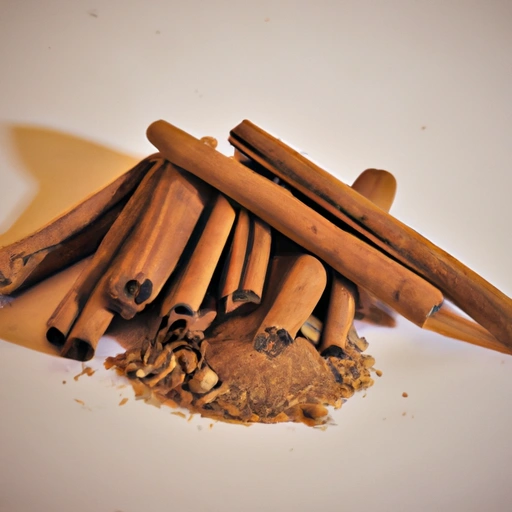Cinnamon
Description

Cinnamon is a highly aromatic spice obtained from the inner bark of several tree species from the genus Cinnamomum. Used in both sweet and savory dishes, cinnamon is loved for its sweet, woody fragrance and warm, comforting taste. It's available in various forms, chiefly as cinnamon sticks (quills) and ground cinnamon powder. When measuring cinnamon, common units include teaspoons (tsp), tablespoons (tbsp), grams (g), and ounces (oz). For example, a typical recipe might call for 1 tsp (2.6 grams) of ground cinnamon or 1 cinnamon stick, which usually weighs around 0.2-0.3 oz (5.6-8.5 grams).
Common uses
Cinnamon is frequently used in baking, particularly in pastries, cakes, and cookies. It's a key ingredient in many spice blends, including garam masala, Chinese five-spice, and pumpkin pie spice. Aside from sweets, it adds depth to savory dishes like stews, curries, and tagines, and is a staple in many beverage recipes such as mulled wine, hot cocoa, and apple cider.
Nutritional value
Calories
One teaspoon (2.6 grams) of ground cinnamon contains approximately 6 calories.
Protein
Cinnamon contains a negligible amount of protein, with about 0.1 grams per teaspoon.
Fat
Cinnamon is virtually fat-free, with less than 0.1 grams per teaspoon.
Carbohydrates
Carbohydrates in cinnamon tally around 2 grams per teaspoon, largely coming from dietary fiber.
Vitamins
Cinnamon is a source of vitamin K, providing about 1% of the recommended daily intake in a teaspoon.
Minerals
Cinnamon is rich in manganese, providing about 40% of the daily value in one teaspoon. It also contains small amounts of calcium and iron.
Health benefits
Cinnamon is reputed for its numerous health benefits, including anti-inflammatory properties, blood sugar control, and antioxidant effects. It's believed to have antifungal and antibacterial qualities, making it a natural preservative. Some studies suggest that cinnamon may improve some key risk factors for heart disease, including cholesterol, triglycerides, and blood pressure.
Potential risks
While cinnamon is safe for most people in culinary amounts, excessive consumption can lead to health issues due to a compound called coumarin found in Cassia cinnamon. It's recommended to limit intake to 0.5-1 grams daily. People with liver issues or those taking medication that affects blood clotting should use cinnamon cautiously and consult with a healthcare provider.
Common recipes
Cinnamon is a star ingredient in recipes like cinnamon rolls, apple pie, snickerdoodles, and churros. It's also used in savory dishes like Moroccan lamb tagine, Indian biryani, and Middle Eastern lentil soup.
Cooking methods
Cinnamon can be used in various cooking methods, including baking, boiling, stewing, and infusing. Ground cinnamon is often added directly to recipes, while cinnamon sticks are used to infuse flavors into liquids and are removed before serving.
Pairing with other ingredients
This spice pairs well with apples, pears, chocolate, and nuts like almonds and walnuts. It complements other spices such as nutmeg, cloves, and ginger.
Summary
Cinnamon is a versatile spice that enriches recipes with its unique aroma and flavor. It has a storied history, a wide range of culinary applications, and is celebrated for its potential health benefits. Whether used in desserts, savory dishes, or beverages, cinnamon adds a touch of warmth and complexity to any dish.